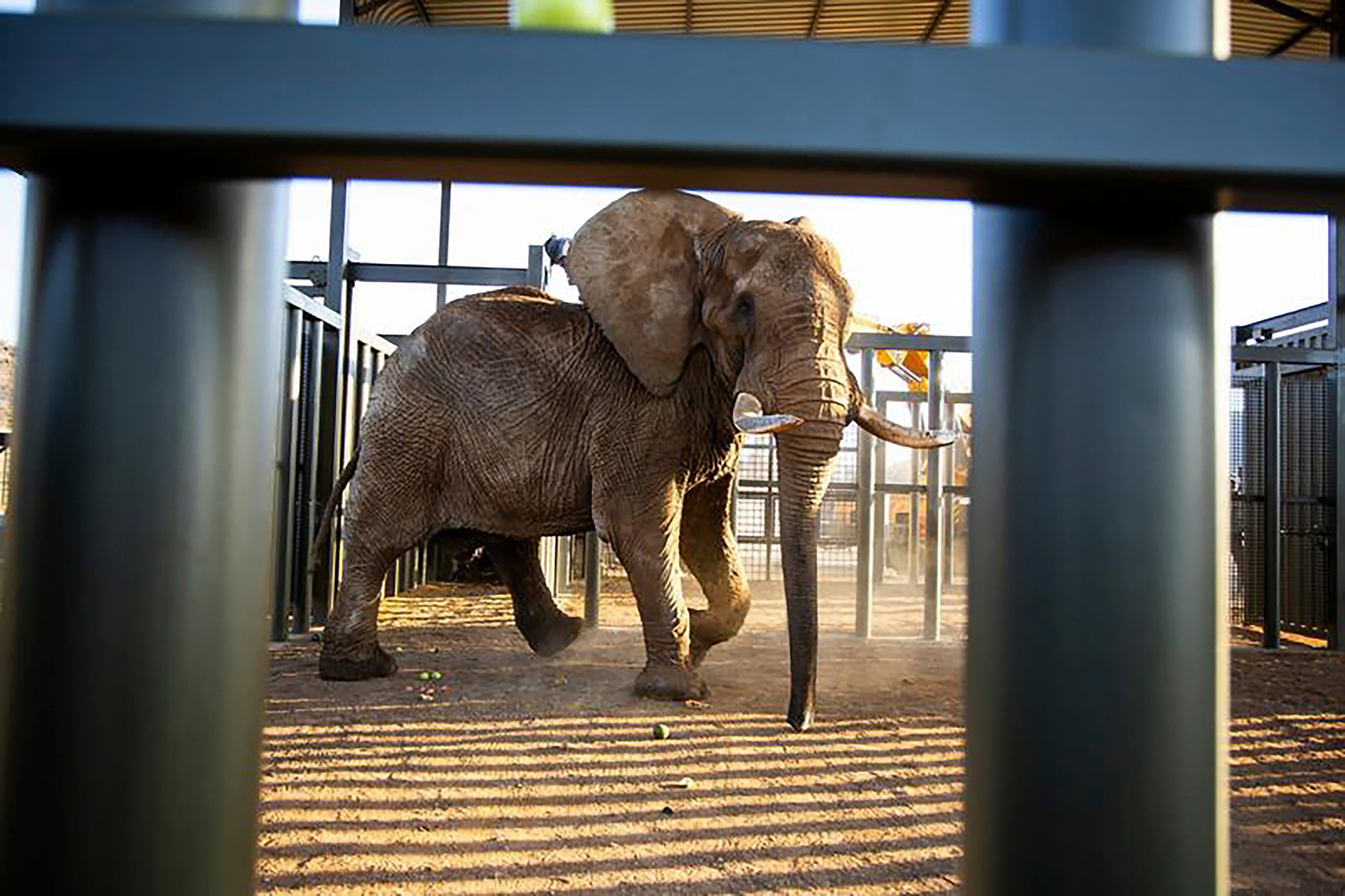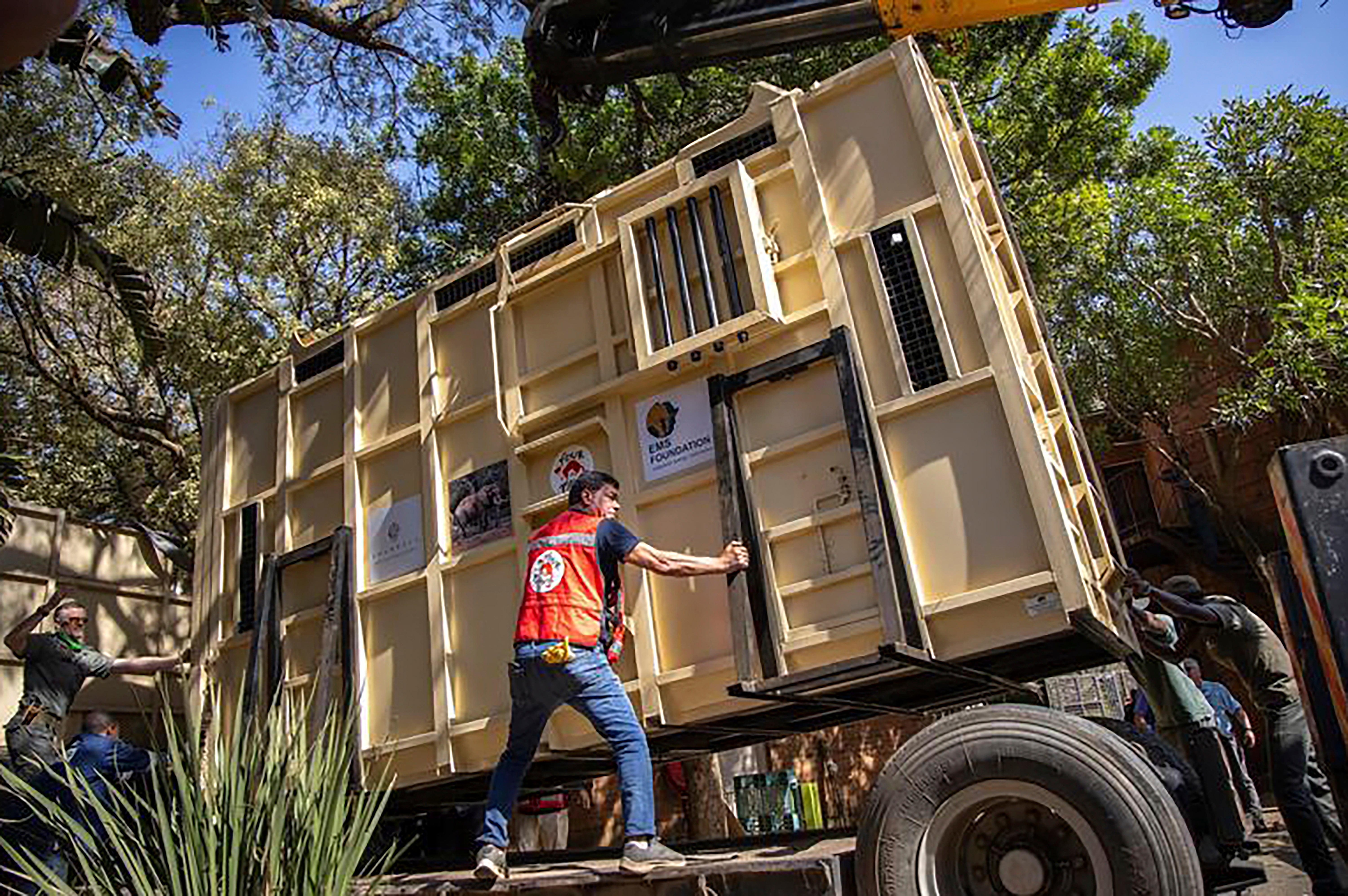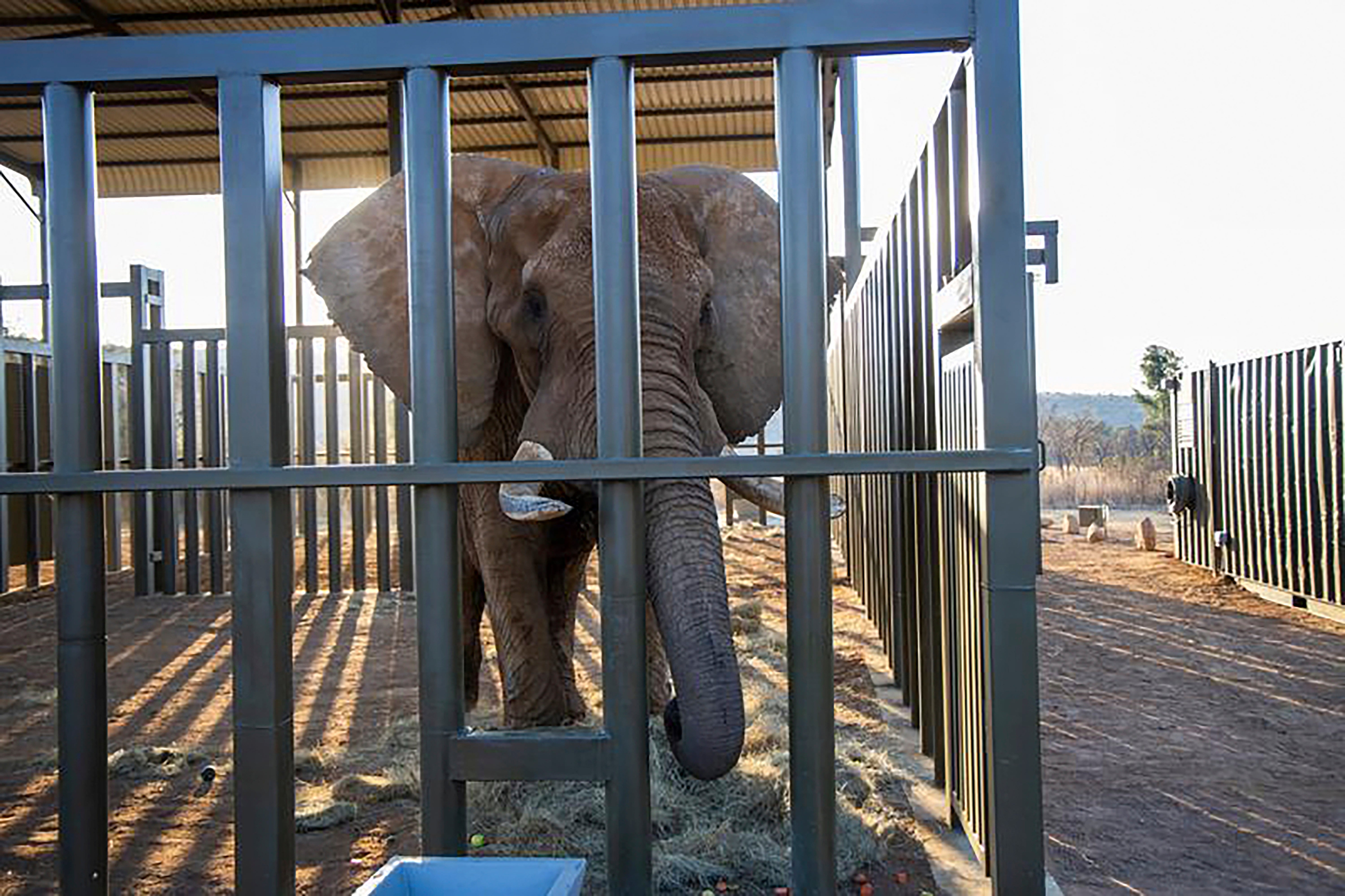How do you get a huge grumpy elephant to a new home 120 miles away? Call the elephant movers

When it comes to the niche business of moving elephants, Dr. Amir Khalil and his team might be the best.
The Egyptian veterinarian's résumé includes possibly the most famous elephant relocation on the planet. In 2020, Khalil's team saved Kaavan, an Asian elephant, from years of loneliness at a Pakistan zoo and flew him to a better life with other elephants at a sanctuary in Cambodia.
Kaavan was dubbed the "world's loneliest elephant" at the time, and the project was a great success. But he was not the only one that needed help.
Next up was the last captive elephant in South Africa.
Charley, an aging four-ton African elephant, had outlived his fellow elephants at a zoo in the capital, Pretoria, where he'd stayed for more than 20 years. Elephants are sensitive animals, wildlife experts say, and Charley was showing signs of being deeply unhappy in his enclosure since his partner, Landa, died in 2020.
Zoo officials decided he should be “retired” to a place more fitting for a big old tusker — a large private game reserve some 200 kilometers (120 miles) away where there's a chance he might make some new elephant friends.
How to get him there? Khalil, an animal rescue specialist at the Four Paws wildlife welfare organization, was an obvious choice for this latest mammoth job.
If ever an elephant deserved to enjoy his twilight years, it's Charley.

Captured as a young calf in western Zimbabwe in the 1980s and taken from his herd, he spent 16 years in a South African circus and 23 years as the prime attraction at Pretoria's National Zoological Garden. He's thought to be 42 years old now and spent 40 of them in captivity.
“I don’t know how many hundreds of thousands of people and children witnessed and enjoyed Charley,” said Khalil. “I think it’s time for him to also enjoy life and to live as an elephant."
The mechanics of moving an elephant to a new life are complex. Khalil doesn't dart and tranquilize elephants, mainly because it's not good for such a big animal. Also, four tons of tranquilized elephant is hardly any easier to move.
And so, a process began of training an occasionally grumpy old elephant to step willingly into a large metal transport container that would be loaded onto a truck. Khalil and fellow vets Dr. Marina Ivanova and Dr. Frank Göritz — who were also part of the Kaavan relocation team — first began interacting with Charley two years ago.
That was to assess how ready he was to move and, crucially, to earn his trust. The interaction was carefully controlled, but it involved teaching Charley to respond to calls to walk up to a "training wall" that has gaps in it for the team to offer him a food reward. In Charley's case, pumpkins, papaya and beetroot are his favorites.

The same process was ultimately used to entice Charley into the transport container. It was thought that it might take months and months for Charley to step happily into the container when that was introduced, but he was ready to go in less than two weeks of crate training last month.
“He was curious, and thinking, what is this new toy?” said Ivanova.
After an hourslong road trip on the back of a truck, Charley was introduced to his new home at the Shambala private game reserve in late August.
He'll be held in an area separate from the main park for a few weeks to allow him to settle, the team said, given such a huge change for an old elephant. The park contains wild elephant herds that Charley may join up with.
Khalil said it is still very rare for captive elephants to be reintroduced to a wild setting and praised officials at the Pretoria zoo and South Africa's environment ministry for allowing this project to go ahead. "It's a great message from South Africa that even an old elephant deserves a new chance,” he said.
Khalil’s team has another elephant move in Pakistan planned for October.
Elephants are highly intelligent, highly social animals, Khalil said, and while Charley was unhappy, he could also be mischievous and playful and show glimpses of delight. Khalil compared Charley's last few unfulfilling years at the zoo without any companions to someone watching the same movie every day, alone.
At Shambala, Charley will have the freedom to take a mud bath, roam the bush and be a wild elephant for the first time in four decades with thousands of hectares (acres) to explore. Some of his early memories as a calf before he was captured may still be there. It is true, the vets said, that elephants have incredible memories.
Charley is already making contact with the other elephants out in the park from his holding pen, Ivanova said. Elephants have deep rumbles that can be heard 3 miles (5 kilometers) away that they use to communicate.
“I hear him rumbling,” said Ivanova, delighted. “We’ll help him turn into a wild elephant again.”
Bookmark popover
Removed from bookmarks